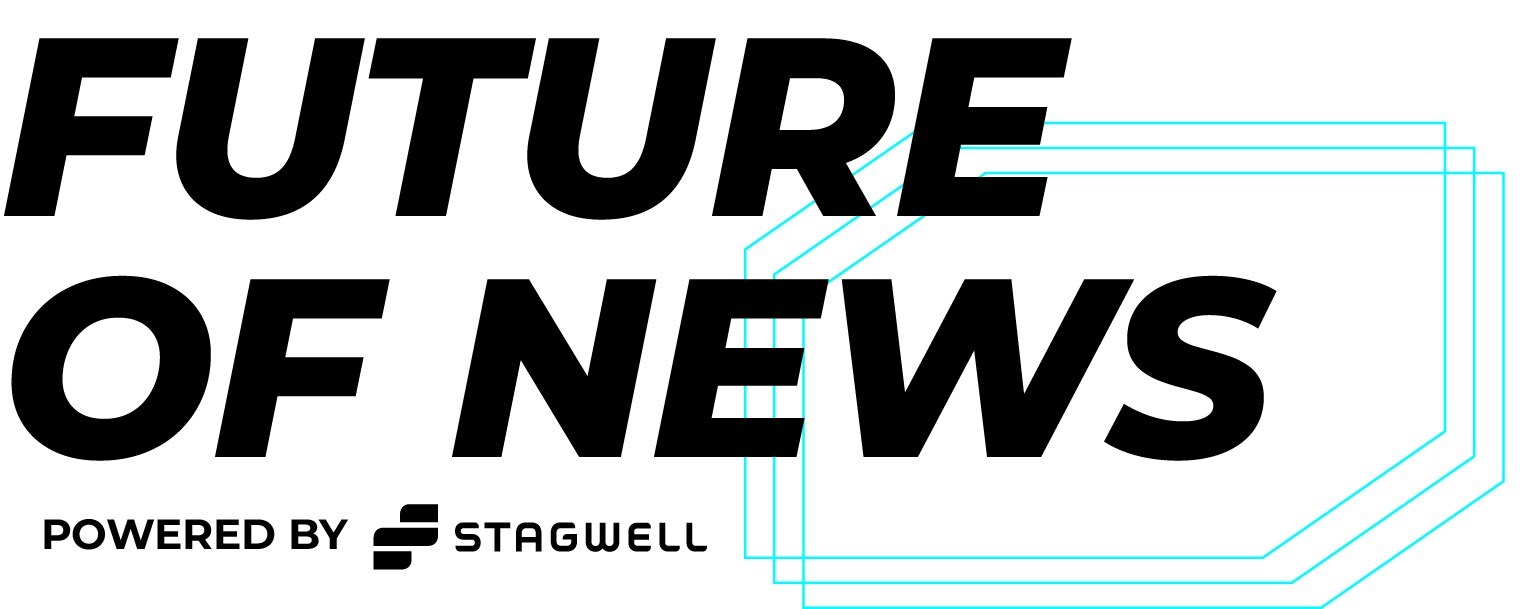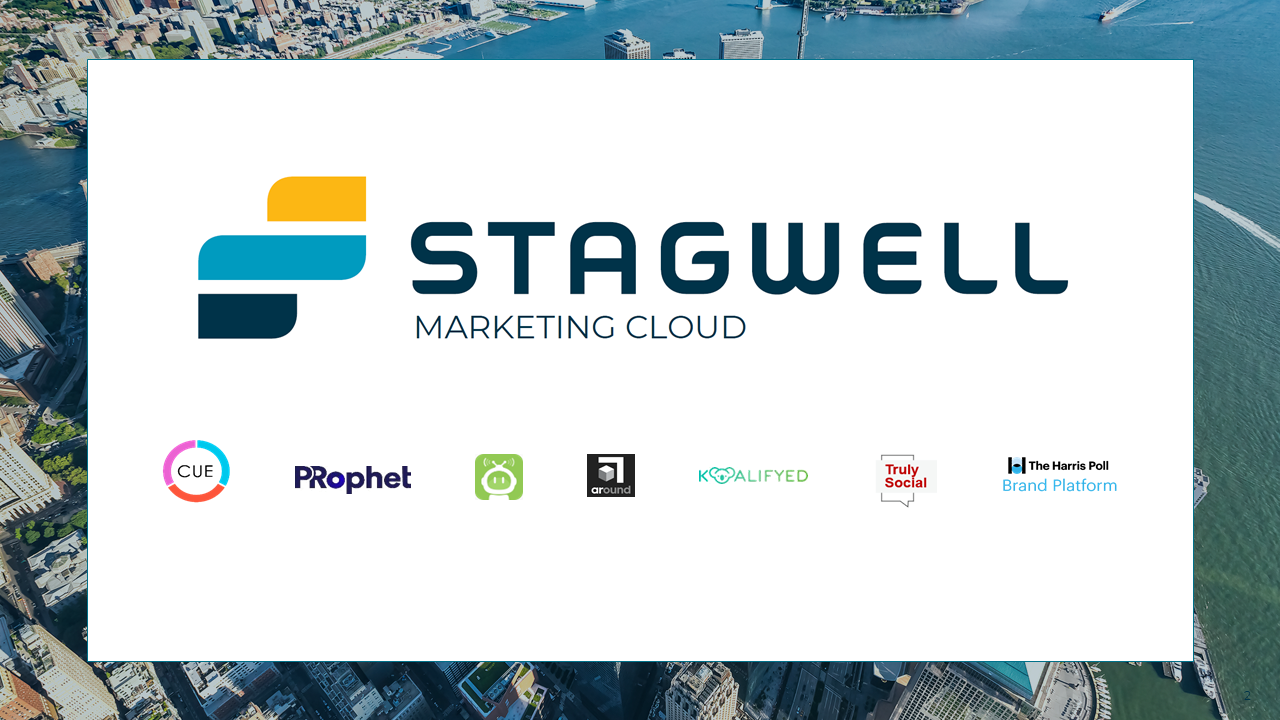By
Stagwell Insights
CONTACT
hello@stagwellglobal.com
SIGN UP FOR OUR INSIGHTS BLASTS
Today’s businesses have more reputational capital than ever before. When reputation is managed, it has the potential to add business value and mitigate risks. Stagwell annually produces the Reputation Quotient, the industry’s leading barometer of American corporate reputation, in partnership with Axios and The Harris Poll to uncover insights which brands are gaining or losing reputational capital – and the expectations of a new generation of reputation-minded consumers.
The Axios Harris Poll 100 is a trusted ranking of the reputations of the companies most on the minds of Americans using a framework Harris has used since 1999. Download the 22nd Annual Reputation Quotient Study report to view the full rankings and gain additional insights about performance year over year.
Register to receive our 2022 research – set to release in late May – using this form. Reach out to hello@stagwellglobal.com if you have questions.
Methodology:
The Axios Harris Poll 100 is based on a survey of 42,935 Americans in a nationally representative sample. The two-step process starts fresh each year by surveying the public’s top-of-mind awareness of companies that either excel or falter in society. These 100 “most visible companies” are then rated by a second group of Americans across the seven key dimensions of reputation to determine the ranking. If a company is not on the list, it did not reach a critical level of visibility to be measured.
Related
Articles
Artificial Intelligence, In the News, Marketing Frontiers, Press Releases, Stagwell Marketing Cloud, Tech
Jun 12, 2025
PRophet, a Stagwell (STGW) Company, Completes Integration of UNICEPTA, Launches Unified Brand and Enhanced Media Intelligence Offering

In the News, Marketing Frontiers, Press Releases, Stagwell Marketing Cloud, Tech
Jun 11, 2025
The Marketing Cloud Launches Cutting-Edge Platform to Simplify Marketing Workflows

In the News, Press Releases, Thought Leadership
Jun 10, 2025
Stagwell (STGW) Chairman and CEO Mark Penn to Discuss the Irreplaceable Power of Human Creativity on the Main Stage of Cannes Lions

Newsletter
Sign Up
Originally released on
LOS ANGELES, March 22, 2022 – National Research Group (NRG), recognized as an insights leader at the edge of technology, content and culture, today announced Grady Miller, head of consumer insights at Apple TV+, as its Chief Marketing Officer. He will run the company’s global marketing, strategic communications, and thought leadership functions. National Research Group is a firm within Stagwell (NASDAQ: STGW), the global challenger network built to transform marketing.
This marks Miller’s return to NRG, where he was most recently Vice President of Strategy in 2019. Then, he helped grow the business firmwide and led assignments with top content, technology, and media companies. In his new role, Miller will oversee the direction of NRG’s client engagement, content marketing, and media outreach. He will also oversee NRG’s thought leadership strategy, answering the questions that matter most to world-class creators, rising disruptors, and big tech firms.
“NRG’s singular expertise has never been more relevant to understanding what is next in culture. That’s why I’m so excited to be rejoining NRG at this pivotal moment. As we harness our vast knowledge of the consumer, NRG is further shaping the conversation around the future of content, tech, and media.” said Miller. “Our expanding data-driven reporting will create unique value for our clients that can fuel their innovation and creativity.”
Miller is an insights and analytics executive who comes to NRG after serving as the Global Research Lead for Apple TV+ since the launch of the video streaming subscription service in 2019. He established and built the group responsible for leveraging consumer insights across Apple TV+, where his team helped guide platform development, programming, and marketing.
“We are delighted to welcome our friend Grady back to NRG,” said Jon Penn, CEO, National Research Group. “Grady is a rare leader who is equal parts creator, counselor and researcher. His vision for seeing what’s next in our culture matched with his uncanny insight into content and technology trends will super charge our marketing to new heights.”
Miller initially joined NRG in 2016 following roles in film development and production at Sony Pictures Entertainment and at research agency Penn Schoen Berland. Miller has sat on the board of Los Angeles World Affairs Council and the American Jewish World Service. Miller received a Bachelor of Arts degree from the University of Southern California’s School of Cinematic Arts and a Master of Business Administration from the University of Southern California’s Marshall School of Business. He will be based in NRG’s Los Angeles office.
About National Research Group (NRG): NRG is a leading global insights and strategy firm at the intersection of entertainment and technology. Rooted in four decades of industry expertise, the world’s leading marketers turn to us for insights into growth and strategy for any content, anywhere, on any device. Working at the confluence of content, culture and technology, NRG offers insights for bold storytellers everywhere.
About Stagwell
Stagwell is the challenger network built to transform marketing. We deliver scaled creative performance for the world’s most ambitious brands, connecting culture-moving creativity with leading-edge technology to harmonize the art and science of marketing. Led by entrepreneurs, our 10,000+ specialists in 34+ countries are unified under a single purpose: to drive effectiveness and improve business results for their clients. Join us at www.stagwellglobal.com.
Contact:
Jordan Yates
818-388-7924
jordan@globalsitroom.com
Related
Articles
In the News, Press Releases
Jun 13, 2025
Stagwell (STGW) Unveils Official News Network as an Extension of its Future of News Initiative, Allowing Clients Direct Access to Leading News Publishers

Artificial Intelligence, In the News, Marketing Frontiers, Press Releases, Stagwell Marketing Cloud, Tech
Jun 12, 2025
PRophet, a Stagwell (STGW) Company, Completes Integration of UNICEPTA, Launches Unified Brand and Enhanced Media Intelligence Offering

In the News, Marketing Frontiers, Press Releases, Stagwell Marketing Cloud, Tech
Jun 11, 2025
The Marketing Cloud Launches Cutting-Edge Platform to Simplify Marketing Workflows

Newsletter
Sign Up
For realtime insights, follow us on LinkedIn
A roundup of Stagwell’s work at Super Bowl 2022:
Stagwell’s agencies are transforming marketing – on one of the most captive fields for national marketing, the Super Bowl. Several of our agencies are showing up at the Big Game this year: Anomaly for Meta, Vroom and Expedia; 72andSunny for the NFL; Forsman & Bodenfors for Polestar; and more. Off the TV screen, our agencies are innovating with omnichannel efforts that tap into the fever and fandom of the big game to drive powerful consumer moments for their brand partners.
We believe that there’s a new definition of success for advertisers at the Super Bowl, and it’s driven by digital transformation and changing consumer expectations around brands and experiences. Stagwell is leading the charge in supporting brands as they navigate this new dynamic – explore Stagwell’s presence at The Game, both traditional and less so, below.
But before you dive in:
Captain Morgan x Anomaly
Captain Morgan’s high-tech punch bowl syncs with real-time game data to keep fans in the loop, even when they’re getting a refill.
Meet the Super Bowl snack table addition you never knew you needed: the Captain Morgan Super Bowl Punch Bowl. Anomaly worked with the Captain Morgan team to bring to life the bowl, featuring stadium-inspired lights and sound, Bluetooth speakers, subwoofers and LED graphic equalizers that sync with real-time game data to create an immersive brand experience.
Plus, don’t miss it’s apperance on Jimmy Fallon.
Cenex x Colle McVoy
Colle McVoy created a new campaign for Cenex that celebrates the quirky, charming and often humorous moments of connection that people experience at their local convenience stores. The campaign shows how its 1,500 locations in 19 states power communities while helping to connect people. It’s the next evolution of the brand’s successful Powered Locally platform and includes six :15 spots, two debuting in a few weeks during Super Bowl 56 in 20 Midwest regional markets.
Crosstown Rivals (premiering 2/13/22)
Local Entertainment (premiering 2/13/22)
CUE Health x Doner
Like COVID itself, at home testing company CUE is quick to adapt, putting together a spot in just eight days with Doner. Voiced by Gal Gadot, the ad positions the smart at home testing technology in conversation with a family’s other smart home devices – just another addition to the growing suite of at technologies that keep us safe, run more efficiently, and provide peace of mind. And while COVID is top of mind now, CUE promises that they’re just getting started.
How COVID Testing Brand CUE Put Together a Super Bowl Ad in 8 Days (AdAge)
Expedia x Anomaly
Ewan McGregor gives a convincing plug for the power of experiences over ‘stuff’
As the travel industry looks to continue to gain footing and recover from COVID-drivel losses, Expedia is leading the pack in its commitment to the Big Game with a spot created by Anomaly. With an emphasis on experiences over things, the spot aims to redefine the relationship between the platform and its customers, while challenging the expectations that travelers may have for Expedia and its sister brand, Vrbo.
‘Ewan McGregor and Expedia have Teamed Up to Give Away Free ‘Trips’ on Super Bowl Sunday’ (Forbes)
‘Why the 2022 Super Bowl Makes Sense for Brands’ (AdAge)
‘Can Super Bowl Ads Make Expedia Group the Nike of Travel?’ (AdWeek)
Groupon x Allison+Partners
Gronk is getting out of town… and opening his hope to one lucky winner for the experience of the lifetime.
Allison+Partners led PR for Groupon’s “Party Like a Player” Super Bowl sweepstakes campaign featuring Rob Gronkowski that underscored the brand’s positioning as the go-to experience marketplace. The team secured coverage in USA Today, TMZ Sports, ABC Audio, Travel + Leisure and many more resulting in 3.7B impressions (and counting) in its first week.
LikeMeat x 72andSunny
LikeMeat is celebrating the Big Game with a TikTok scavenger hunt, created by 72andSunny and Blue Hour Studios. To promote its plant-based Chick’n Wings product launch, LikeMeat has invited TikTok users to hunt for digital clues that crack a secret code. Those who unlock the code have a chance to win two free tickets to the Super Bowl as well as other LikeMeat-branded prizes. It’s yet another example of brands going digital-first for the big day, eschewing traditional spots for lower-budget, higher impact activations to connect with their audiences.
Why a plant-based food company started the first TikTok scavenger hunt featuring Gronk just in time for the Super Bowl (Digiday)
Got Milk? x GALE
The milk industry is making a statement at this year’s Super Bowl – that what you’re seeing on the field is not the whole picture. Their spot, airing on the NFL Network and created by GALE, is an inclusive look at the power of women in sport, even (and especially) where they aren’t expected. Featuring women from across the Women’s Football Alliance, the tagline “Football is Football” encourages a broader look at the game and the powerful changemakers behind it.
NFL x 72andSunny
After topping the USA Today Ad Meter last year, 72andSunny + NFL are returning to the screens this year just before halftime with another spot that aims to capture the magic, legacy and power of the game. Featuring cutting edge puppetry and CGI technology from experts at Swaybox, the ad features legendary NFL talent in unexpected places and spaces – bringing the game right into viewers homes. Get ready to bring down the house.
‘
”They Will Be Blown Away’: NFL’s Next Step in ‘Future-Proofing’ Audience Begins with a Super Bowl Ad’ (USA Today)
‘Behind the NFL’s Super Bowl Ad Plans, Which Include Puppetry and CGI’ (AdAge)
Polestar x Forsman & Bodenfors
In it’s first Super Bowl ad, Polestar, the high-end EV company with roots in Sweden, joined a spate of automakers – with a very different approach. The minimalist 30-second spot, executed by F&B, places a focus on what it doesn’t have – gimmicks, punchlines, scandals and distractions. It’s all about the future, driven by electric.
‘Swedish EV Startup Polestar Makes Super Bowl Debut with a “No Cliche” Approach’ (Ad Age)
Quest Oculus for Meta x Anomaly
In it’s first Super Bowl as the newly-rebranded Meta, Oculus Quest is doubling down on the metaverse, with a clear message to the audience – the metaverse is already here, and we’re waiting for you. The full spot, created by Anomaly and premiered on Good Morning America on Feb. 10, shows a metaverse in full swing – including a very-real post-game concert that will be headlined by the Foo Fighters. Its giving people a reason to visit the virtual reality world Meta is building – and pulling viewers into the future they are creating.
‘Inside Meta’s Super Bowl Commercial for the Metaverse’ (AdAge)
‘Meta’s Super Bowl Commerical Depicts Old Brand’s New Life in the Metaverse’ (AdAge)
Tillamook x 72andSunny
72andSunny created a shoppable, digital only music video, Chedderbration to mark National Cheddar Day coinciding with the Super Bowl. The multimedium campaign includes limited edition merch, unique cheddar-based recipes, and coupons accessible only through the Cheddarbration homepage.
Vroom x Anomaly
Vroom’s Super Bowl 2022 commercial sings the praises of a reliable broker – literally
Anomaly makes a return Super Bowl appearance with Vroom, the online car retailer who is literally singing the praises of having a reliable dealer on your side during the car selling process. The 30 second spot again features high-tempo choreography from celebrity choreograper Mandy Moore.
‘Vroom Releases Super Bowl 56 Ad ‘Flake: The Musical” (AdAge)
Related
Articles
In the News, Press Releases
Jun 13, 2025
Stagwell (STGW) Unveils Official News Network as an Extension of its Future of News Initiative, Allowing Clients Direct Access to Leading News Publishers

Artificial Intelligence, In the News, Marketing Frontiers, Press Releases, Stagwell Marketing Cloud, Tech
Jun 12, 2025
PRophet, a Stagwell (STGW) Company, Completes Integration of UNICEPTA, Launches Unified Brand and Enhanced Media Intelligence Offering

In the News, Marketing Frontiers, Press Releases, Stagwell Marketing Cloud, Tech
Jun 11, 2025
The Marketing Cloud Launches Cutting-Edge Platform to Simplify Marketing Workflows

Newsletter
Sign Up
What are the forces at work reshaping the way brands and marketers connect with today’s consumers? The next decade of marketing innovation will be driven by the emerging technology piquing consumer, brand, and investor interest today: new mediums of storytelling unlocked by mixed-reality, new methods of communicating powered by social commerce, and problems to pre-empt driven by convergent social forces and the enduring digital acceleration.
Stagwell is all about transforming marketing – and we’re spending the year working with our agencies to explore how the most innovating and compelling opportunities in new frontiers will transform the way brands and marketers do business.
We’ll…
explore the practical, helping you understand things like if and how your brand should integrate virtual influencers in digital marketing efforts.
probe the conceptual…with questions like what responsibility brands have as they begin to imagine marketing and brand identity in space?
offer strategies for making sense of the monumental…with perspectives on how and when brands should get involved in the bourgeoning metaverse.
Meet Marketing Frontiers – Stagwell’s new content series that will unpack these blue-sky ideas before today’s brands, simplifying the future and helping leaders understand how these concepts will change the way we do business today and tomorrow.
Originally released on
CONTACT
Lorem Ipsum
FEATURING
Related
Articles
Artificial Intelligence, In the News, Marketing Frontiers, Press Releases, Stagwell Marketing Cloud, Tech
Jun 12, 2025
PRophet, a Stagwell (STGW) Company, Completes Integration of UNICEPTA, Launches Unified Brand and Enhanced Media Intelligence Offering

In the News, Marketing Frontiers, Press Releases, Stagwell Marketing Cloud, Tech
Jun 11, 2025
The Marketing Cloud Launches Cutting-Edge Platform to Simplify Marketing Workflows

Artificial Intelligence, In the News, Press Releases, Stagwell Marketing Cloud
May 22, 2025
PRophet, a Stagwell (STGW) Company, Releases AI Agentic Search for InfluencerMarketing.AI, Revolutionizing Influencer and Creator Discovery

Newsletter
Sign Up
Originally released on
CONTACT
John Gerzema
FEATURING
A study conducted on behalf of Protocol by the Harris Poll found that while most U.S. adults have not used augmented reality or virtual reality technology, a notable portion are interested in trying AR and VR. The study also found younger U.S. adults were more familiar with the metaverse than older U.S. adults, and that Americans are unsure about the future of the metaverse’s regulation.
While most U.S. adults have not used AR or VR tech, many are still interested in adopting the technology. Early adopters of AR and VR tech skew younger.
Three quarters (72%) of U.S. adults have not used any augmented reality technology.
Currently, 16% of U.S. adults have not heard of AR technology. Part of this may be due to current product hesitancy or disinterest: only a quarter (25%) of U.S. adults have no interest in using AR technology. On the other hand, younger adults are more willing to embrace AR, especially Millennials. One in three (32%) Millennials currently uses AR technology (compared to 23% of Gen Z, 14% of Gen X, 6% of Baby Boomers).
Although more hesitant, other “young” generations are also open to AR. 38% of Gen Z and 38% of Gen X have not used AR technology, but say they are interested in doing so.
Two-thirds (68%) of U.S. adults have not used any virtual reality technology.
Currently, 12% of U.S. adults have not heard of VR technology. Hesitancy and disinterest in VR is similar to AR. Again, just a quarter (26%) are not at all interested in trying VR. Youth interest is also higher for VR. Three in five (61%) Gen Zers and 45% of Millennials have used VR technology at least once (compared to just 31% of Gen X and 10% of Boomers).
Users of AR and VR technology have had enjoyable experiences with some of the more common products. The most used VR and AR technologies are:
VR headsets (e.g., Oculus, HTC Vive) (61% used; of those, 88% had a positive experience)
Mobile VR apps (33% used; of those, 66% had a positive experience)
AR social media tools (31% used; of those, 81% had a positive experience)
VR motion controllers (e.g., standard hand controllers, wands, wheels) (30% used; of those, 77% had a positive experience)
Unsurprisingly, younger people are more familiar with the metaverse than their older counterparts. Younger people also say more often that the metaverse will enrich their lives.
Two in three (62%) U.S. adults said they were not familiar with the concept of the metaverse before taking this survey.
That said, younger generations are more familiar with the metaverse. 55% of Gen Z and 60% of Millennials are at least somewhat familiar with the concept of the metaverse (compared to just 35% of Gen Xers and 17% of Boomers).
Regardless of familiarity levels, even after reading a description defining the metaverse, 52% of U.S. adults feel overwhelmed by the concept. Similar to other new technologies – most notably NFTs – such sentiment reveals a population that needs a seemingly complex and abstract topic to become more simplified and relatable in order for adults to embrace it.
Four in ten (37%) U.S. adults agree that the metaverse would be more fun than real life, and 38% agree that the metaverse would make their life better.
These numbers climb for Millennials. 53% agree that the metaverse would be more fun than real life, and 51% agree that the metaverse would make their lives better. These numbers also climb for people who were familiar with the metaverse before taking this survey. 54% agree that the metaverse would be more fun than real life, and 61% agree that the metaverse would make their life better.
U.S. adults are unsure about the future regulation of the metaverse. That said, a noteworthy share agrees that no one company should own all of the metaverse.
Overall, three in ten (27%) U.S. adults are not at all sure what group should regulate the metaverse, and another one in ten (9%) do not think the metaverse should be regulated. However, the vast majority of those previously familiar with the metaverse before taking this survey have an opinion of who should regulate the industry (92%).
Compared to just 19% of all U.S. adults, 28% of people who were familiar with the metaverse before taking this survey think metaverse and technology industry leaders should regulate the metaverse.
Those familiar with the metaverse say more often that regulation should be in the hands of users themselves. Compared to 14% of all U.S. adults, 21% of people who are familiar with the metaverse think metaverse users should be in charge of regulation. Across awareness levels, the U.S. government (11% all adults) and independent oversight committees (14%) were less popular regulatory options.
Despite controversy around the expanding power of big tech firms, only one in three U.S. adults (37%) say the metaverse should not be owned by any one company. Perhaps surprisingly, even fewer of those familiar with the metaverse before this survey feel this way (19%).
However, 63% of U.S. adults can see one company owning the metaverse. When asked who that one company would be, the top choices were Google (13%), Amazon (12%), Meta (11%), and Apple (10%).
For people previously familiar with the metaverse, the top choices shuffled slightly with Meta (17%) in the top spot followed by Google (16%), Amazon (15%), and Apple (13%). This could indicate a branding win for Meta among metaverse users and potential users.
The following companies had little support for ownership of the metaverse from U.S. adults:
Microsoft (7%)
Roblox (1%)
Snap Inc. (0%)
The Sandbox (0%)
Microsoft (7%)
For less established brands or brands that target younger audiences, a lack of overall brand awareness likely played a role in their lower position.
Methodology:
This survey was conducted online by The Harris Poll on behalf of Protocol during January 14-18, 2022, among 1,060 U.S. adults ages 18 and older. This online survey is not based on a probability sample and therefore no estimate of theoretical sampling error can be calculated. Figures for age, sex, race/ethnicity, education, region, and household income were weighted where necessary to bring them into line with their actual proportions in the U.S. population. Propensity score weighting was used to adjust for respondents’ propensity to be online. For more information, please contact Madelyn Franz or Andrew Laningham.
Download the full data tables here.
Related
Articles
In the News, Press Releases
Jun 13, 2025
Stagwell (STGW) Unveils Official News Network as an Extension of its Future of News Initiative, Allowing Clients Direct Access to Leading News Publishers

Artificial Intelligence, In the News, Marketing Frontiers, Press Releases, Stagwell Marketing Cloud, Tech
Jun 12, 2025
PRophet, a Stagwell (STGW) Company, Completes Integration of UNICEPTA, Launches Unified Brand and Enhanced Media Intelligence Offering

In the News, Marketing Frontiers, Press Releases, Stagwell Marketing Cloud, Tech
Jun 11, 2025
The Marketing Cloud Launches Cutting-Edge Platform to Simplify Marketing Workflows

Newsletter
Sign Up
CONTACT
Beth Sidhu
FEATURING
Stagwell Chief Brand and Communications Officer Beth Sidhu visits the Stagwell Marketing Cloud at CES 2022 and highlights key priorities for tech investment for in-house marketers.

There’s a reason the marketing calendar begins each year with CES: there is no better place to track the technologies that will transform the way consumers get and share information, engage with brands and experience culture. Stagwell is on the ground in Las Vegas and virtually at CES this week sharing ARound, a location-based AR platform, which is the latest addition to our suite of tools for in-house marketers: the Stagwell Marketing Cloud.
Why build an in-house marketing cloud? CMOs need a trusted toolbox of solutions to help support business transformation as, per Forrester, 77 percent of global organizations now have some form of in-house agency. We’ve built the Stagwell Marketing Cloud to support in-house teams in four ways:
Powering real-time business intelligence
Empower and manage secondary brand ambassadors
Supercharging communications with predictive AI
Forge new mediums to connect with consumers
Powering Real-Time Business Intelligence
Real-time business intelligence tools like the Harris Brand Platform can provide in-house teams with daily insights on brand perception, equity, sales funnels and the impact of marketing campaigns on consumer behavior and perceptions. In an era where errant tweets and unfortunate headlines can cause your brand’s stock to soar or sink, there are few better ways to fireproof your operations than regular pulses of brand perception.
Supercharging communications with predictive A.I.
Marketing communications evolve but the mission remains the same: get the right message to the right person at the right time. When harnessed strategically, earned media can help a team offset (or if they’re lucky, supplant) the need for a hefty paid investment.
PRophet is a tool that enables in-house marketers and PR professionals to predict media interest, sentiment and spread of a press story prior to pitching. The product is powered by the latest developments in artificial intelligence and machine learning and bolstered by expanding partner databases such as with Podchaser to give teams the predictive intelligence they need to tie amplify their great creative ideas with earned media coverage. As A.I. gets more sophisticated, tools like PRophet can free-up PR pros to focus their creativity on brand-building efforts and growing brand mandates like ESG, DEI, and engaging new stakeholders.
Empowering Brand-Safe Ambassadors.
In a platform dominated society, influence is currency. With the rise of social commerce, live streaming, and yes even the metaverse, it’s more important than ever for brands to have strategies for authentically activating influencers that dominate their respective categories. At the same time, marketers need assurances that the influencers they partner with are brand-safe and services rendered are compliant with agreed-upon contracts.
Koalifyed is an end-to-end influencer marketing application that brings helps brands manage complex influencer programs. Underpinned by a bot-detection solution, SNIFF (which stands for social network influencer friend or foe), Koalifyed is a great tool for in-house marketers handling complex influencer campaigns.
Pushing the New Frontiers of the Consumer Experience
Without a doubt, 2022 will bring all the tools of mixed reality and the metaverse into marketing efforts. Just as brands are looking into the virtual world, consumers will be clamoring to return to the physical world, pending the control of the Omicron variant. In-house shops can use location-based AR as an easy, cost-effective investment into developing more engaging digital layers to live events.
ARound is an augmented reality creation tool for live events that empowers brand to bring audiences together at scale so they can engage, interact, and socialize in a completely new and meaningful way. By giving partners the tech and a content interface to experiment with the medium, ARound empowers in-house teams to invest now in the budding metaverse to enhance the journey for consumers.
Where to From Here?
In-house marketers need the best tools available and we’re excited to that support in-house marketing transformation for modern businesses. See ARound, our AR product, on the floor this week at CES, peruse our digital CES booth featuring more products from the Stagwell Marketing Cloud, and reach out to hello@stagwellglobal.com.
Related
Articles
In the News, Press Releases
Jun 13, 2025
Stagwell (STGW) Unveils Official News Network as an Extension of its Future of News Initiative, Allowing Clients Direct Access to Leading News Publishers

Artificial Intelligence, In the News, Marketing Frontiers, Press Releases, Stagwell Marketing Cloud, Tech
Jun 12, 2025
PRophet, a Stagwell (STGW) Company, Completes Integration of UNICEPTA, Launches Unified Brand and Enhanced Media Intelligence Offering

In the News, Marketing Frontiers, Press Releases, Stagwell Marketing Cloud, Tech
Jun 11, 2025
The Marketing Cloud Launches Cutting-Edge Platform to Simplify Marketing Workflows






